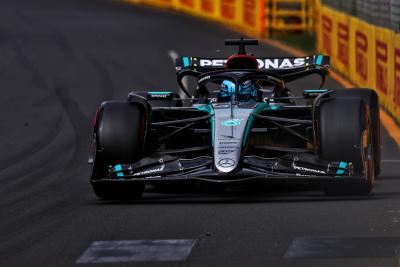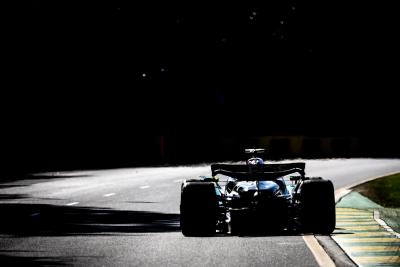Mercedes’ alarming confession about the W15’s biggest weakness
Mercedes have made an alarming admission about the issues plaguing their 2024 F1 car.
Mercedes have admitted that correlation issues are to blame for the ongoing fluctuating performance struggles with their 2024 F1 car.
The Silver Arrows have endured a difficult and underwhelming start to the season for the third consecutive year following the introduction of major regulation changes in 2022.
Mercedes hoped a revamped concept for 2024 would finally address the issues they faced but the W15 has proved to be inconsistent and a source of frustration for drivers Lewis Hamilton and George Russell.
After suffering a double DNF at the Australian Grand Prix, Mercedes team principal Toto Wolff conceded that “fundamentally, whatever we see in the tunnel doesn't correlate with what's happening on the track.”
Asked if Mercedes are still seeing problems with wind tunnel data not correlating with on-track performance in the team’s latest post-race debrief video, technical director James Allison said: “In simple terms yes.
"There are always correlation issues in every year in every team and there always will be correlation issues between what you see in the factory and what you see on the track because the factory is a sort of reduced version of reality.
“It is not the same as driving a car on a real track on the actual asphalt of the actual circuit with all its infinite detail and complexity.
“You have simplified models back here in the factory and those simplified models are powerful for steering you one way or the other. But all of them have their shortcomings and all of them have their correlation issues.
“In large measure the models that we have, the simulation tools we have, are amazingly good at keeping us on the straight and narrow and guiding us towards more lap time. The devil's always in the detail.
“In the area of the high to low-speed balance, we could do with some improvement in that area of the models, because there we have some difference between what we are seeing on the track and what we are seeing back in virtual world.
"And those differences, if we can bring them closer together then it just allows us to be more accurate with the projections we make back here address the things that we believe are holding the car back.”
Mercedes produced an encouraging turn of pace in final practice in Melbourne, only to experience a sudden drop-off in performance when it came to qualifying as Hamilton suffered a shock Q2 exit.
“If we were trying to draw that pattern together then probably the strongest correlation that we can make at the moment, is that our competitiveness drops when the track is warm, when the day is at its warmest and therefore the tyre temperatures rise with those of the track,” Allison explained.
“The times when we have been at our best have been all in the sessions which are the coolest and so that gives us some clues about what we need to do as we move forward from here. But from FP3 to qualifying in Melbourne there was not a setup change.”
On trying to find a better window for the W15 to operate in, Allison added: “If you know what you're shooting for, if you've sort of identified correctly an accurate assessment of why our competitiveness waxes and wanes, then you can work into the weekend a program that is dedicated towards trying to move the temperature and the temperature balance front to rear in your favour and using all the conventional set up tools on the car. That work you can do back here in the factory and the simulation and so on.
"But if you conclude having exhausted the degrees of freedom that you have available to you in setup terms that you still need to go further, well then that gets harder at that point because that will be that there are underlying characteristics in say the aerodynamic map that you’ve engineered or the suspension characteristic that is aggravating that particular feature, and in order to make it really heal up nicely then you would have to change those underlying features.
“It can be either quick and dirty or a little more involved and a bit more complicated.”











